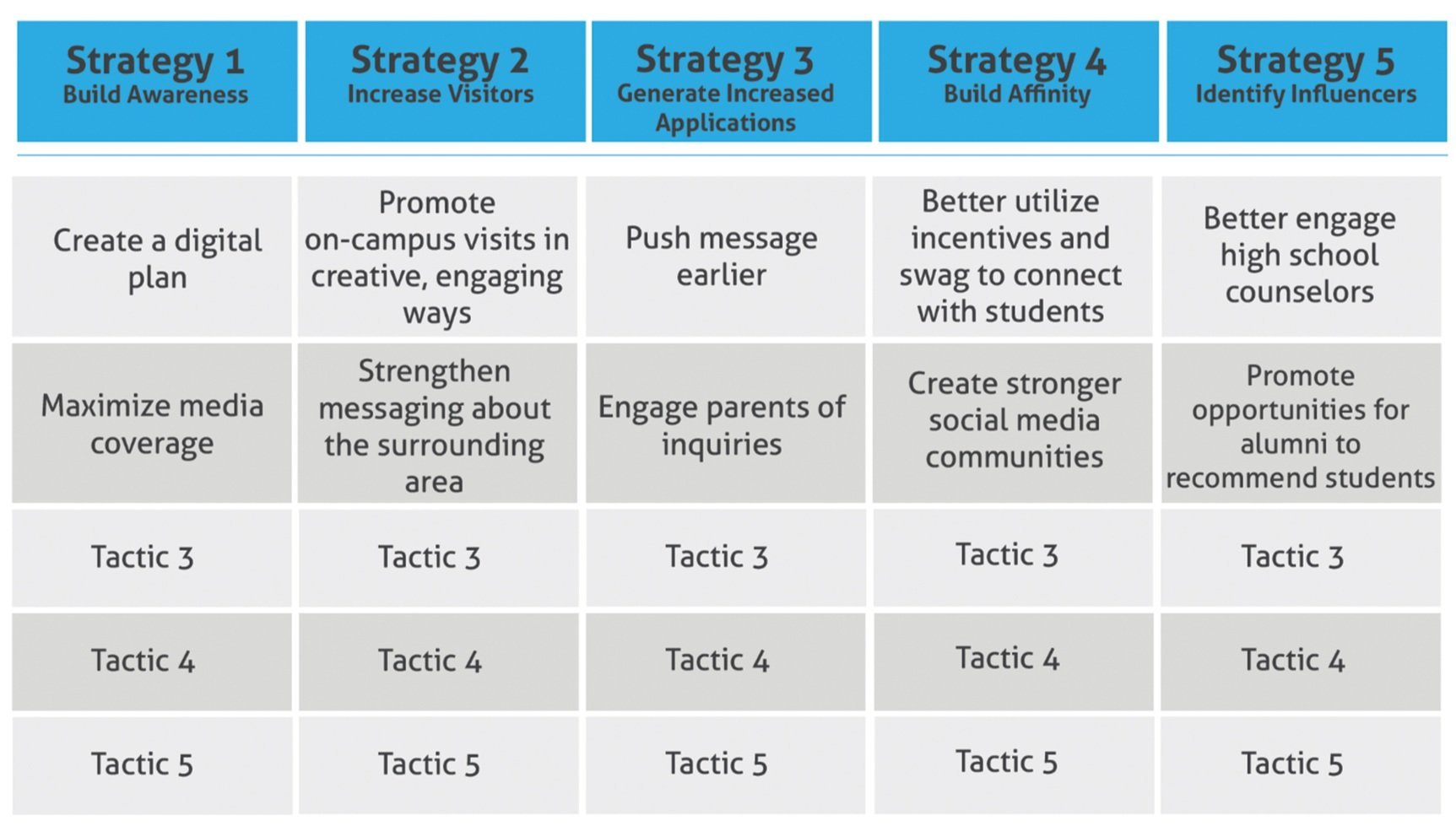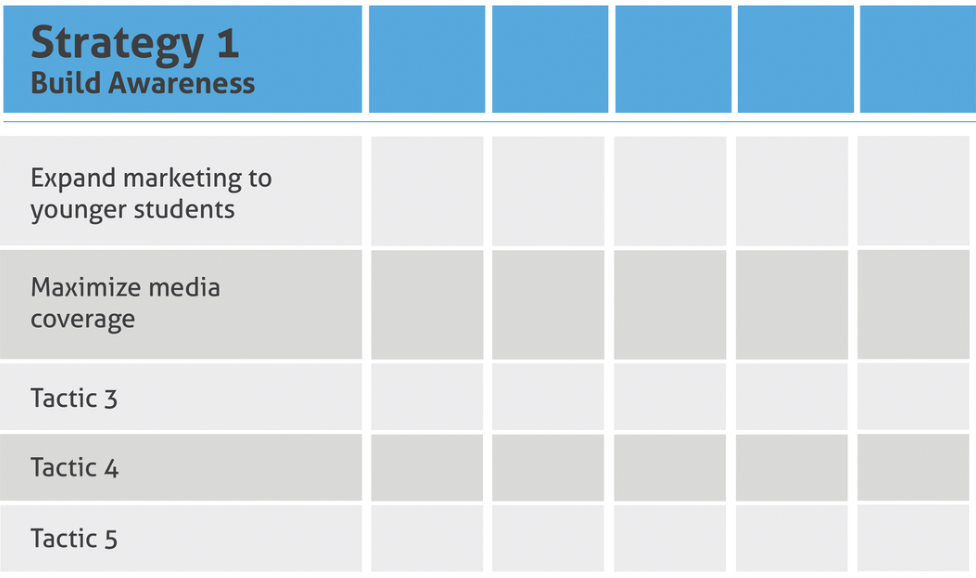Creating a Fast-Track Enrollment Marketing Plan
By Aaron Basko, Associate Vice President for Enrollment Services, University of Lynchburg
The current landscape of enrollment marketing is evolving at a breakneck pace. Many institutions are finding themselves in a moment of time that calls for a pivot in strategy, but they often find it hard to correct course rapidly. It can take months to build consensus, assemble all the necessary players, and decide on a process to realign your efforts. Traditional strategic enrollment marketing plans are not always a great help. While they do build consensus, they can be very cumbersome to create. They also typically take a lot of time - time that you may not have to make critical adjustments for the current cycle. And at today's speed of change, the traditional five-year strategic plan is often outdated before it is even printed. Are there better tools to get things turned in a new direction?
I once jokingly told a colleague that getting a university to adjust its strategic course is like trying to turn a battleship using a spoon as a rudder. Maybe that is a bit of an exaggeration, but no one would deny that it is tough. Fortunately, there are tools that can serve as that kind of rudder. I want to share one of the most powerful of these rudders that I have used with you. It is simple, powerful, and - best of all - free. It is so simple, in fact, that you'll be tempted to dismiss it, but don't be fooled. I have used this straight-forward tool to drive immediate, double-digit enrollment growth in the first year at my past two institutions. This "fast-track" enrollment marketing plan is the quickest way I know to get your team oriented in a new direction, and pointed toward success.
Is it Strategic or Tactical?
In creating a Fast-Track plan, your goal is not to answer the big “why” questions (e.g. Why do we do what we do, the way we do it, for the people we serve?). Those answers belong in your institutional strategic plan. Ideally, you are starting with the next level down, what I think of as the “what” questions. What needs does your institution have from your marketing and enrollment team? If you can clarify those questions, the answers will drive the “how” questions that you answer with individual, daily tactics.
Step 1: Identify a Common Strategy List
The good news is that most campuses tend to need the same things, which is what allows you to build this kind of Fast-Track Enrollment Marketing Plan without a full discovery process. Almost all schools need to build their brand, increase awareness, increase applications, attract more visitors to campus, help applicants build affinity for the institution, and identify potential influencers. Step one is to bring your team together to agree on a common set of categories that resonates. Create a basic list of these main categories of activity for your marketing team.
Your team might find something that is truly a unique need, but in most cases, what you will discover is a list of needs that are common to you and your competitors. Keep the categories big and broad, as your next steps will fill in the detail below them to create a unique approach to meeting those needs. Place these needs at the top of a chart that will become your “Strategy Chart. A sample chart would look like this:
Step 2: Define Your Tactics
For step two, you will use your new strategy chart to begin identifying first level tactics.
This first level tactics should identify the types of tools you are going to utilize to reach the strategy, but they probably won’t provide the exact marching orders of how to do so. Think of them as answered the question, “Using what kinds of approaches?”
Choose how many rows you want for first-level tactics. I typically work with 4-6, and I try to get the same number for each category. With your strategies (needs) in the header row, go down the column and begin adding approaches that your team believes will help you meet the need. This is only the second of three levels, so the tactic does not need to be measurable yet. Instead, think of these as the tools that will help you get there.
When you have filled all of the rows in that first column, move on to the next column and complete the same process for your next strategy, and so on. When this step it complete, you should have a grid of between 20-36 squares, with each square containing a first-level tactic.
Step 3: Take it to the Next Level
Now you are ready to dig into the detail and make concrete, measurable second-level tactics or action steps. You can arrange this in different ways, but my preference is to break each top-level strategy into its own slide. So, using the examples above, our first need/strategy is “Build Awareness”. That column from the strategies sheet becomes the first column of your new slide.
Step 4: Identify Action Steps
You now fill all of the empty cells with action steps for that tactic. As you fill in each box, the question you be answering is, “How exactly will we accomplish this?” It is often helpful to include numbers, dates, or other clearly measurable benchmarks to know when you have executed the sub-tactic completely. A few examples are below.
Step 5: Execute and Track
The best plan in the world won’t help if you don’t implement and track your progress. This template format makes this part of the process easy. If you wish, you can add a point person’s name to either each tactic or each action step to make sure that these projects are implemented.
Keep your team informed about the progress that you all are making on your plan. An easy way to do this is to color code the cells in your grid. For example, you could change each cell to yellow as you launch an initiative, then change it again to green when the tactic is complete. Your team can quickly scan your slides to see how they are progressing with the plan.
A full-scale enrollment marketing plan, of course, is the gold standard, but when that is just not a realistic goal, these simple steps can get you to a Fast-Track Enrollment Marketing Plan quickly. This template is easy to manage and easy for other areas of campus to understand. Use it to organize your efforts and to pivot quickly towards results.
Need assistance in creating an enrollment marketing plan at your institution? Let us know how we can help!




